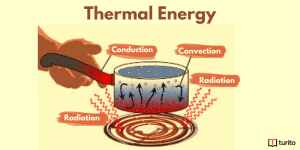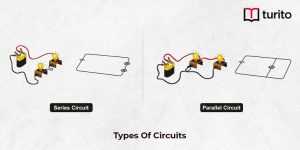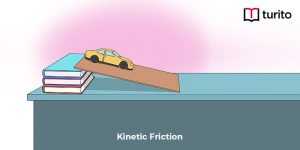Have you ever wondered what our lives would look like if we did not have electricity? No television, no computers, no light, no fan, no AC, not even smartphones. Life would seem impossible to live, right? So that is why electricity is a need and not just a want.
Motors and generators are important parts of electricity and power generation. They are used in numerous places in this world. Without their invention, electricity would not be possible.
Electrical Generator
As its name suggests, an electrical or electric generator is a type of generator that generates electricity. So, what happens in an electric generator is that mechanical or kinetic energy is converted into electrical energy. Electric generators are otherwise called dynamos.
Moreover, mechanical energy is produced by various sources such as gas turbines, steam turbines and wind turbines. Mechanical power generated from these devices then enters the electric generator, which converts this energy into useful electrical energy. This electrical energy can be used in various forms, from powering the circuits to generating a high amount of electricity in big buildings.
These electric generators are capable of providing all the required power for powering electric power grids.
Let us have a look at the following figure to understand what an electrical generator looks like:

Furthermore, in order to convert electrical energy into mechanical one, we need to use electric motors. It is called a reverse conversion. Generators and motors have both differences and similarities.
Let us surf through the electric generator more in detail and understand how they do this conversion.
History of Electrical Generators
Before electricity and magnetism were invented, people back in the day used electrostatic generators. Electrostatic principles are used to operate these generators.
The following are a few reasons why electrostatic generators were never used for generating huge quantities of electric power:
- Electrostatic generators contain a low power rating
- They had huge issues while insulating machines that were generating high voltage currents.
Due to these reasons, electrostatic generators were termed inefficient and incompatible for daily use of electricity generation. Taking everything in mind, a British scientist named Michael Faraday invented a disk named after him in 1831. It was called the Faraday disk.
How is Electricity Generated?
Generators usually do not involve the creation of electricity solely. It uses mechanical or kinetic energy and converts them into a useful form of electrical energy. This mechanical power can force the electric charges to move accordingly.
These charges are contained in the wire having windings through an external electrical circuit. This electron flow is responsible for the output current, which is provided by the generator.
Nowadays, industries use generators that work on the Faraday principle. It involves electromagnetic induction. Faraday suggested that electricity can easily be created with the movement of an electrical conductor while keeping it in a magnetic field.
Due to this movement, the voltage difference will be generated. This difference exists between the conductor’s ends. It can make the electric charges flow, thereby generating current.
Components of Electrical Generator
An electric generator includes various components. Those are provided below:
- Main control: Main control is the control panel that controls the generator interface.
- Charger: Chargers are helpful in keeping the generator working and making sure it does not run out of battery.
- Exhaust system: An exhaust system in an electric generator helps dispose of the waste exhaust gases that come from the generator after the process.
- Lubricant system: A lubrication system is a must in any mechanical device. Likewise, an electrical generator keeps the machine durable and ensures smooth operation.
- Cooling system: The cooling system present in an electric generator helps ventilate the heat produced during the mechanical-electrical power or energy conversion process. It keeps the machine at a moderate temperature.
- Voltage regulator: A voltage regulator is fixed in an electrical generator to regulate the output voltage.
- Fuel system: The fuel system acts as a fundamental system that helps keep the system operational over a longer life span.
- Alternator: An alternator is the most important component in an electric generator because it does the main process, converting mechanical or kinetic energy into electric energy. The resulting electric energy is used in numerous places, from laminating bulbs to powering a washing machine.
- Engine: The engine is used as the source of mechanical energy for the generator. This power is produced from various mechanical components, including steam turbines, gas turbines and wind turbines.
- Frame: The frame is the main structural component of the electrical generator. It gives shape to the machine.
Types of Electric Generator
An electric generator is generally categorised into two major types. It majorly depends on the kind of electric energy that is generated. Let us see them in detail below:
1. AC Generator
AC, also known as an Alternative Current generator, is a device capable of converting mechanical energy into electrical energy. The input supply of the AC generator is mechanical energy and is supplied by combustion engines, steam turbines and gas turbines. Moreover, the outcome of the AC generator includes alternating electric power. This power can be seen in the form of alternating current or voltage.
Faraday’s law of electromagnetic induction is the basic principle used in AC generators. This law defines that emf (aka electromotive force) or voltage can be generated in a current-carrying conductor. It helps in cutting a uniform magnetic field.
Furthermore, rotating magnetic with a stationary conductor should be used to achieve that. Or else, we can achieve it through the rotation of a conducting coil in a static magnetic field. The purpose is to keep the coils in a stationary position. Doing so will make drawing the induced AC from a stationary armature coil simpler than a rotating coil.
Parts of an AC Generator
Let us look at the diagram provided below:

These are the major parts included in an AC generator:
- Slip rings
- Stator
- Rotor
- Armature
- Field
- Prime mover
2. DC Generator
A DC generator is another electrical device that helps convert mechanical energy into electricity. An electromotive force (emf) is generated while the conductor slashes the magnetic flux. This method is also based on the principle of Faraday’s law of electromagnetic induction. This induced emf is capable of causing a current flow when the circuit of the conductor is closed.
In a DC generator, the current-carrying conductor can be seen situated in a varying magnetic field. Doing so will induce an emf in the conductor. Based on Fleming’s right-hand rule, whenever there is a change in the conductor’s direction of motion, there will also be a change in the direction of induced current.
Imagine a conductor on the left is moving upwards while an armature is rotating clockwise. Now, when a half rotation occurs in the armature, the conductor’s direction of motion will be reversed, i.e., it will go downwards.
Therefore, the current’s direction in the armature can be seen as an alternating current. As a result, we can obtain a unidirectional current at the terminals.
Parts of a DC Generator
A specialty of a DC generator is that it is capable of operating as a DC motor without making any changes to its construction. Thus, we call it a DC machine.
Take a look at the figure to understand the construction of a DC generator:

These are the major parts included in a DC generator:
- Rotor
- Stator
- Yoke
- Armature windings
- Poles
- Pole shoes
- Brushes
- Commutator
Uses of Electrical Generator
- The main usage of electric generators can be seen in transformers.
- Electric generators are used to drive motors.
- They can be utilised in labs due to the good range of voltage output.
- They are extremely efficient in terms of energy because there is a drastic reduction in fuel consumption.
- Electric generators are very helpful in providing power to most power networks. It also provides electricity across all the cities.
- Construction sites use electric generators before setting up the power.
- Another common application of electric generators is found in households and small businesses as they can provide excellent power backup.
Conclusion
To conclude, this blog has provided a piece of extensive knowledge on the electric generator, starting from understanding what an electric generator is. Moreover, we have also seen how electricity is generated while briefly having a look at the history of electric generators.
Furthermore, we have understood the components and their working principle inside the generator. In addition, we have learnt about two types of electric generators. Finally, we have seen its real-world applications and usages.
Frequently Asked Questions
1. How is electricity generated?
A. Electric generators take manual or mechanical energy from machines like combustion engines, steam turbines, gas turbines, etc. and convert them into a useful form of electrical energy. Hence, that is how electricity is produced or generated.
2. Mention the major types of electric generators?
A. The following are the four main types of electrical generators. They are:
- Inverter generators
- Portable generators
- Induction generators
- Industrial generators
3. What size generator is used in houses?
A. To power the whole house equipment, at least 5000 to 7500 watts would be required. In most cases, one can run even critical electrical devices with power as low as 7500 watts.
4. What are the disadvantages of electric generators?
The main disadvantage of an AC generator is that it has a lot of extra insulation because of all the associated voltages. Furthermore, these generators are prone to sparks and heating problems, which can result in electric shocks and even fires.
5. What are the benefits of electric generators?
The Benefits of Electric Generator
- Damage Prevention
- Emergency Power
- Power for Appliances
- Rugged and Dependable
- Recreational Uses.

Relevant Articles
Understanding Thermal Energy: What It Is and How It Works
Thermal energy is essential to our daily lives, from warming …
Understanding Thermal Energy: What It Is and How It Works Read More »
Read More >>Avogadro’s Number: Meaning, Importance, and More
Introduction The concept of measuring the microscopic particles that make …
Avogadro’s Number: Meaning, Importance, and More Read More »
Read More >>Kinetic Friction – Definition, Laws, Types
Kinetic Friction Kinetic force is a force acting between two …
Kinetic Friction – Definition, Laws, Types Read More »
Read More >>




















Comments: